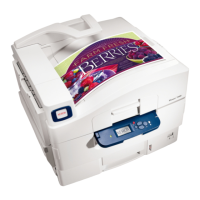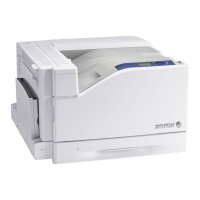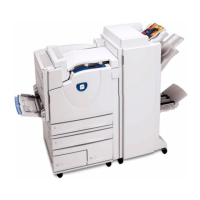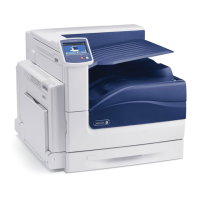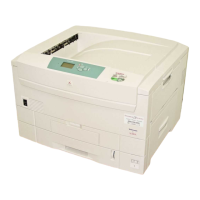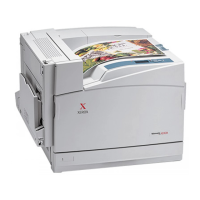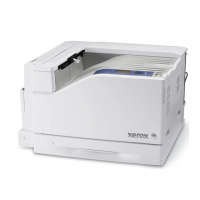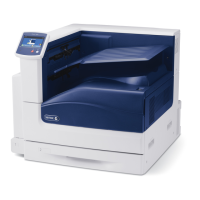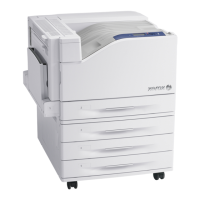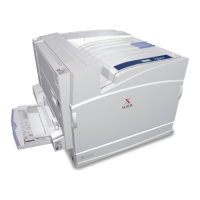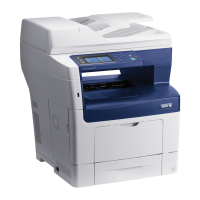General and Operation Overview
Phaser 7100 Service Manual Xerox Internal Use Only1-86
Process Control
The Process Control prevents changes to the image quality due to varying temperature and humidity in
the printer, Drum deterioration with age, etc. to always provide a stable image quality. It can be largely
divided into two controls: Potential Control and Toner Supply Control.
Potential Control
The Potential control of the printer sets the Exposure Potential (ROS Laser Diode (LD) Power) and the
Developer Bias (DC Voltage of the Developer). The Left CTD Sensor (the CTD Sensor that is located on
the right side of the Intermediate Transfer Belt) that is part of the CTD Sensor Assembly (PL 9.1.10)
reads the Toner density of the patch and the Potential Control is performed based on that value.
CTD Sensor - The CTD Sensor comprises an LED and a photo detector. The LED emits light onto the
Intermediate Transfer Belt and then obtains Toner density by the light that is reflected.
Patch - The patch is a small image for Process Control that is created on the Intermediate Transfer Belt.
Potential Control Overview
1. The temperature and humidity in the printer is measured and the measured values are used to
adjust the various type of voltage (ROS LD Power, BCR Applied Voltage, Developer Bias, BTR
Applied Voltage), which are then used to generate a patch on the Intermediate Transfer Belt.
2. The power of the LED that emits light from the CTD Sensor is adjusted.
3. The patch density is then read by the CTD Sensor, the value of which is used to perform correction
for the deterioration of the Intermediate Transfer Belt, etc., and then the appropriate ROS LD
Power for the next printing will be calculated.
4. If complete correction by the ROS LD Power is not possible, the value of the Developer Bias will be
adjusted.
The timings at which the Potential Control Corrections perform are: at power On, at the completion of
a print job, in the middle of a print job under certain circumstances.

